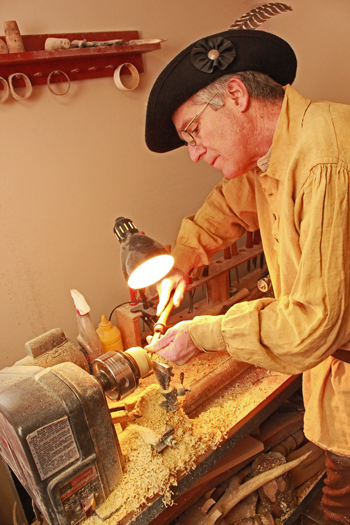February 2013 Message from the Guildmaster
February 5, 2013 by Jeff Bibb
Filed under Message from the Guildmaster
Greetings:
In late winter or early spring, a lot of folks look forward to the celebration of Mardi Gras in new Orleans. This annual event reaches a fever pitch with Fat Tuesday, the day before Ash Wednesday, the first day of Lent. For a century or more, one particular faction, the Mardi Gras Indians, make their yearly appearance in elaborate costumes they have labored over since the previous year. These costumes typically feature hundreds of brightly colored feathers and beadwork, often denoting some important event in their lives, their relatives’ lives, or their ancestors. The music they perform is directly linked to traditional Native American chants and songs, which they have passed down for well over a century.
The Mardi Gras Indians have a long history in New Orleans, much of it shrouded in secrecy and links to cultures long since extinct in the region. Modern Mardi Gras Indians are of African American descent. Originally barred from participating in the parades by the formal society of the New Orleans Krewes because of their race, they adopted the persona of the Native Americans, both in their costumes, and their songs, as a way to express their own persecution in the land where they lived.
Traditionally, the Indians are led by the Spy Boy, Flag Boy, and then the glorious appearance of the “Big Chief”. There is always a large back line of followers who parade with the Indians, sing the chants and songs, and support the effort. In earlier days the Indian parades were noted for violence, sometimes fatal, as the occasion offered an opportunity to settle scores with rival tribes who had spurred social or personal disagreements. In modern times, the tribes meet on the streets, send out scouts to gauge the temperament of their “adversaries,” and then politely acknowledge each other’s presence as part of the celebration. It is a fascinating cultural performance, and I suspect that those who have witnessed it, have been struck by the power and intensity of it.
A couple of weeks later, on St. Josephs night, the Indians once again venture on the streets to parade, chant, and sing, this time in a more private setting for their activities. It is documented that the Indians restrict themselves to their own ward neighborhoods, and the crowds of the previous Mardi Gras parties are not present to witness their performances. Following this final night, they retire to their homes and clans to prepare for the next year’s festivities.
Mardi Gras is immediately followed by Lent, a traditional Christian period of sacrifice, leading up to Easter. In modern times, we are admonished to “give up” something that we perceive as important in our lives for the several week period prior to Easter. Lent is an old custom that I think many have forgotten or forsaken in our modern world. In earlier times, I expect it was taken much more seriously, and the sacrifice would be viewed more importantly. Today, what exactly do we give up in the spirit of the season? For a few weeks, it would be a terrible inconvenience to not stop by Hardees on the way to work for that sausage biscuit. Perhaps those two glasses of wine in the evening could be overlooked for a while… oh the inconvenience and suffering of it all.
When one thinks of our ancestors, this type of sacrifice may have been much more serious. Food was always a struggle for many folks living in remote areas, and cut off from urban civilization. Alcohol was often enjoyed by more wealthy citizens, but not taken for granted, since almost everything was made by the folks living in a particular area. I suspect that giving up any part of a much simpler life was a greater impact than we can imagine in our time of convenience and rampant consumption.
One only needs to look around our households to see how much we accumulate, and how much is not really needed in our lives. As Jan and I contemplate a move this year, we have been looking at the “things” we have in our home. I am often amazed at the sparse furnishings and decorations depicted in modern interpretations of colonial and early American homes. Furniture was a real luxury, and there was not a lot of it. Functional pieces like tables and chairs were common, perhaps there was a larger storage cabinet for the meager amounts of kitchen ware and china that might have been present. Bedding was necessary, but not as fancy or elaborate as our modern pieces. Paintings and decorations were enjoyed by the more affluent, but not to large degrees except in extremely wealthy homes.
Perhaps this year, we should all take a look at what we have, and maybe what we can do without. I expect that the results will be revelatory in more ways than one. I know that many folks who live simpler lives with less material possessions seem to be much happier. Of course, consuming less makes our impact on the land and our resources much less demanding. Maybe Lent has a way of teaching what many have forgotten. I think this may have been much of its original message.
In closing, I look forward to seeing many of you at our annual meeting in a few weeks. I have enjoyed serving as your Guildmaster for the past year, and I hope that my service has been valuable to the guild and its membership. I have enjoyed writing these messages each month, and sincerely hope that I have provided something to think about with each one. I always welcome your comments, and appreciate the ones I have received. Thank you for your support, and for your participation in our organization.
Your most humble servant,
Jeff Bibb, Guildmaster




